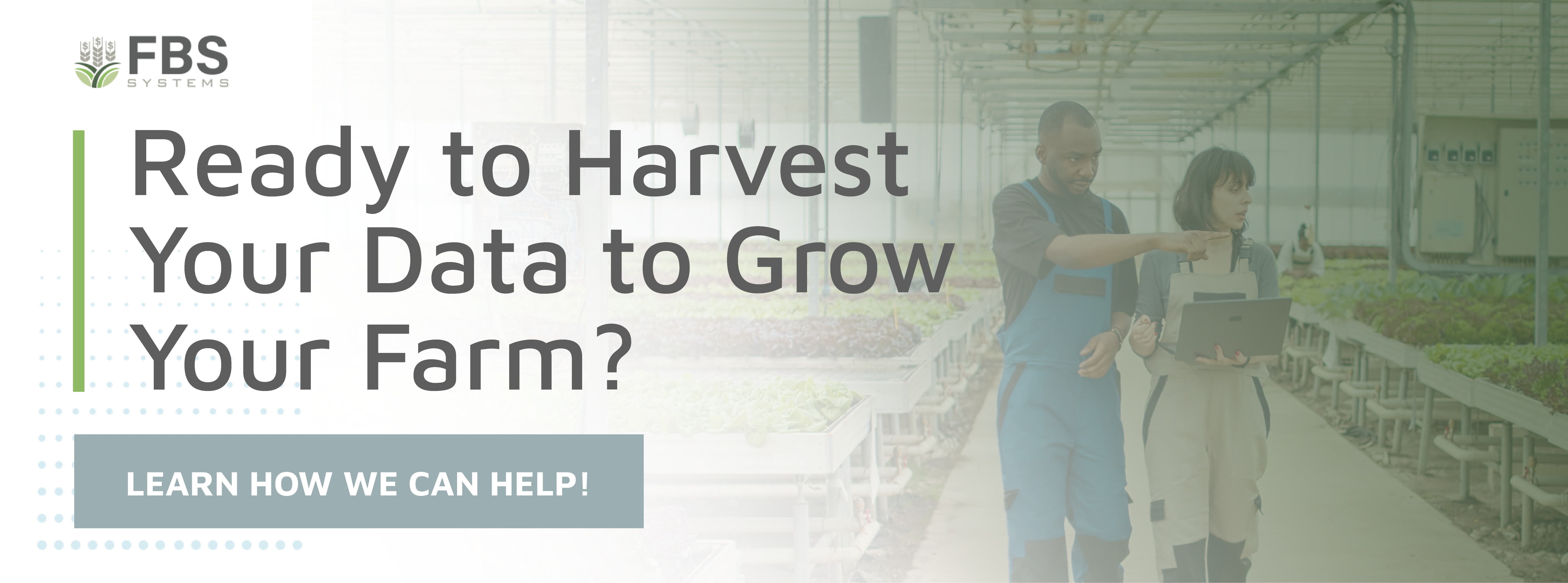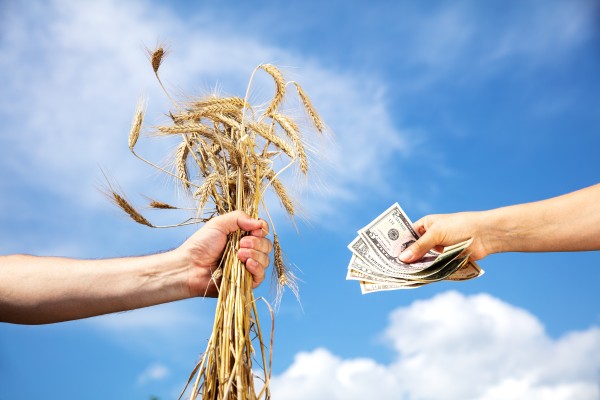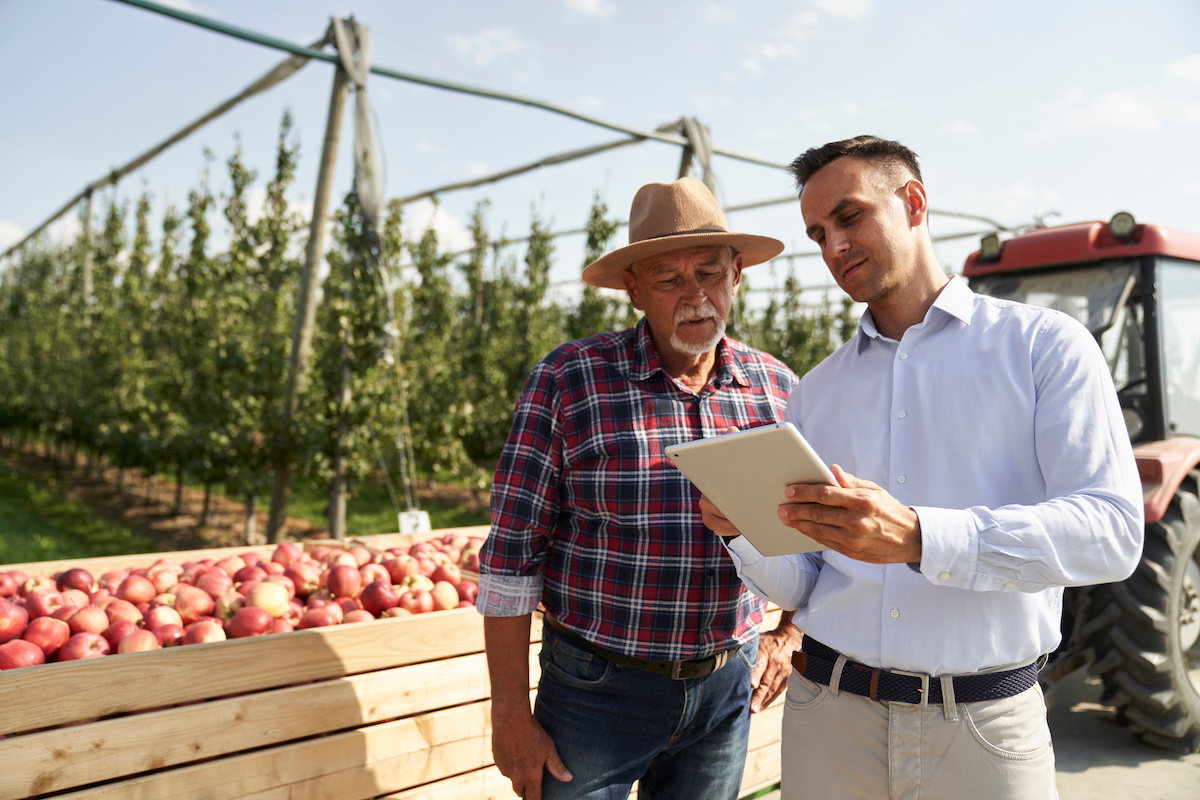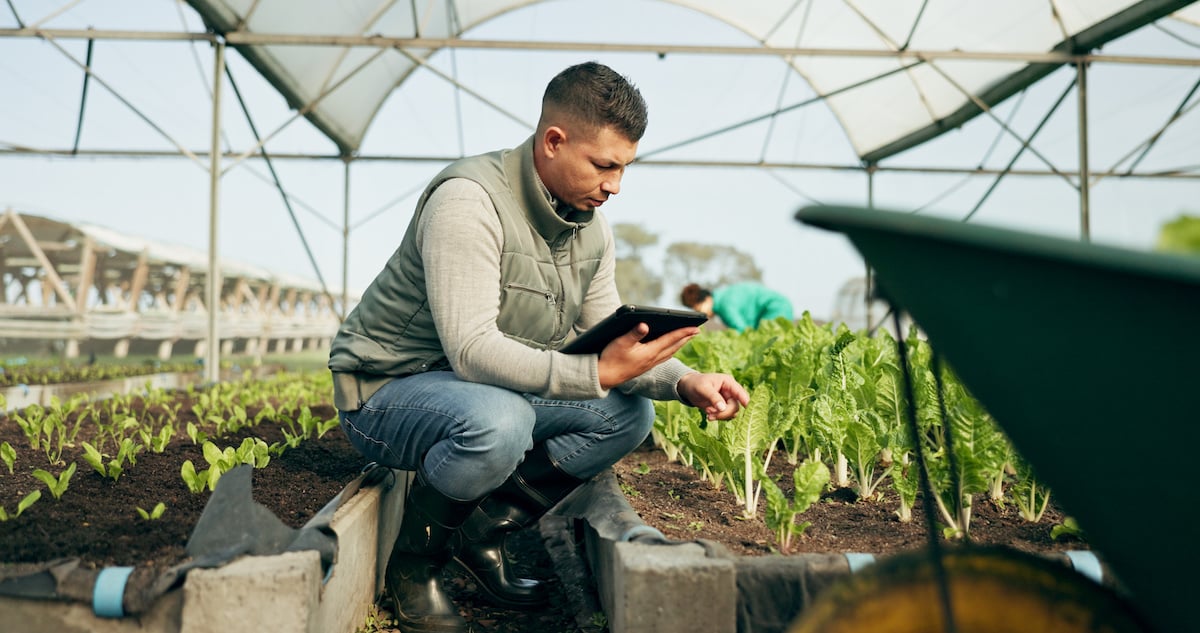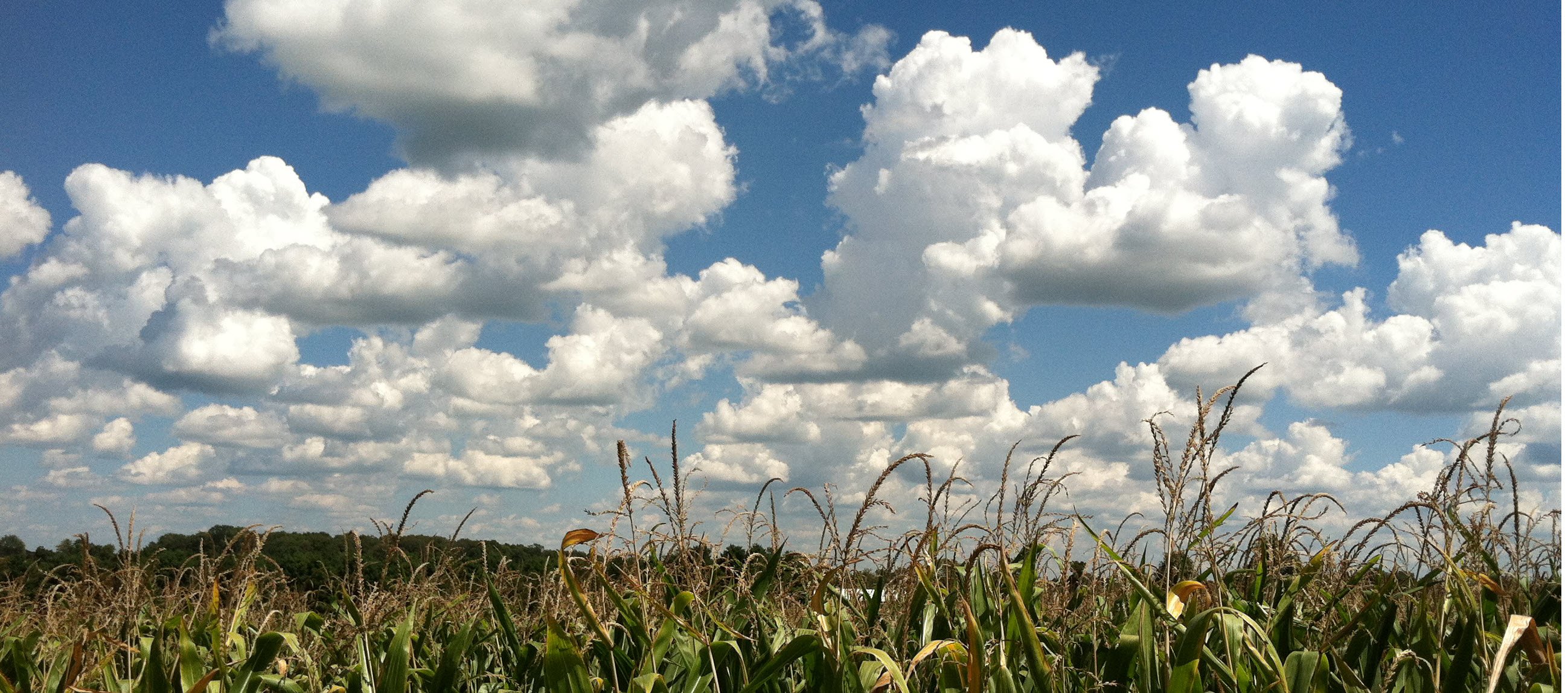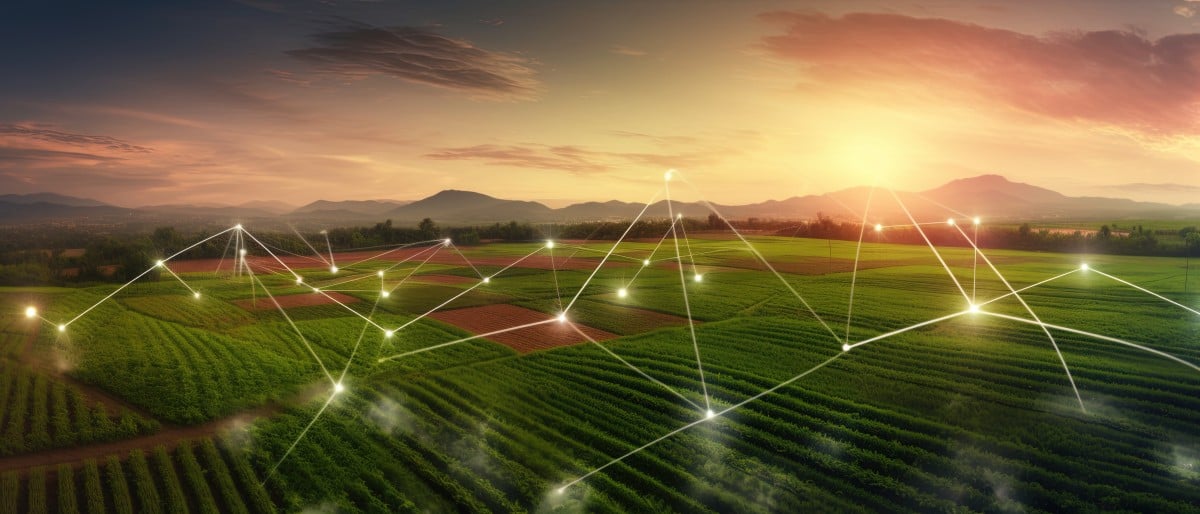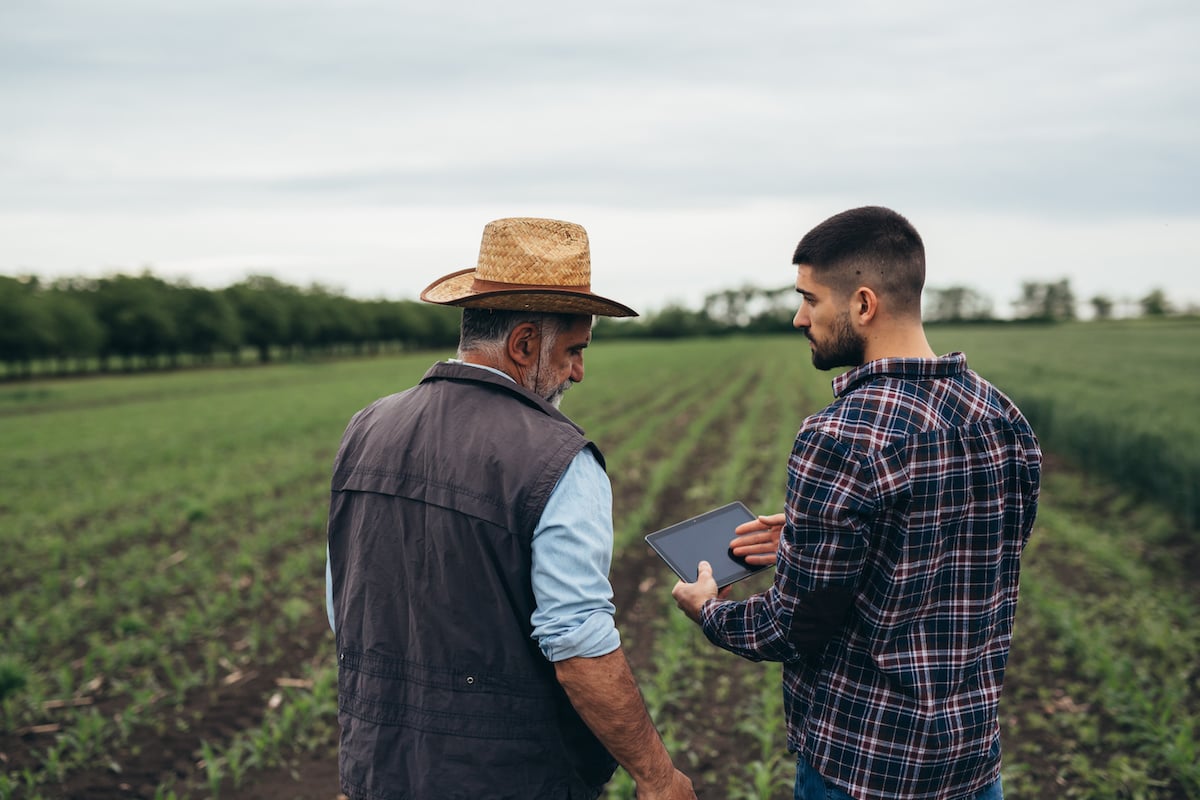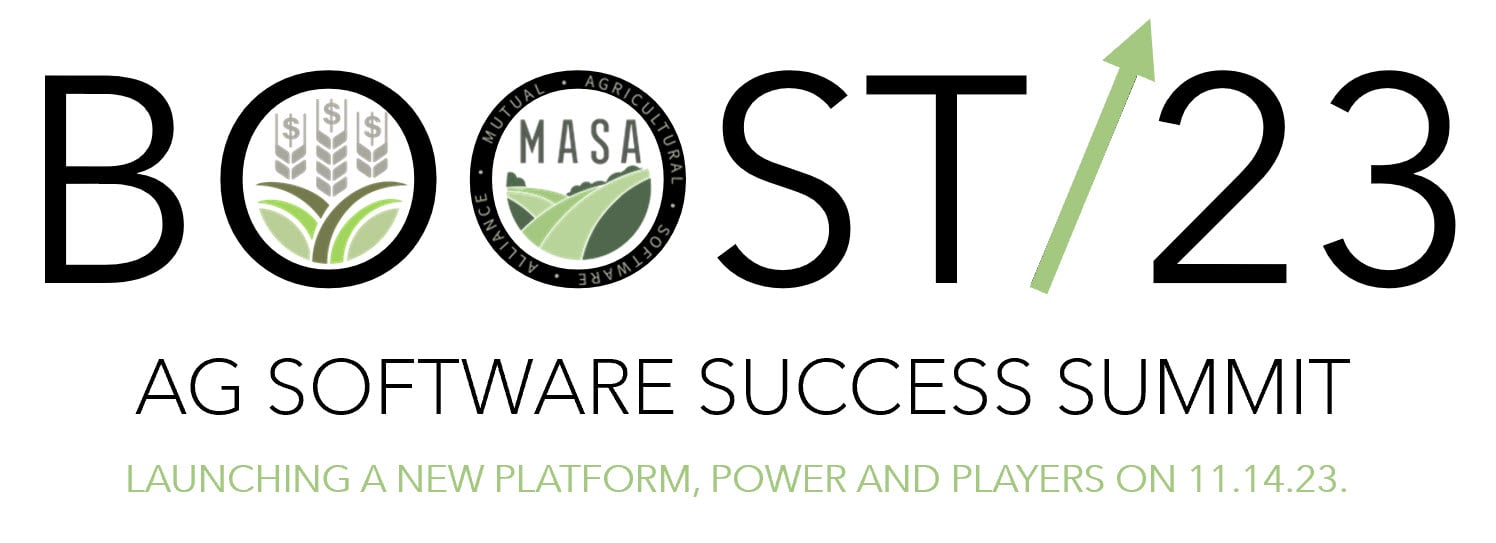Inflation is an ever-present problem for any business—and farms are no exception. Higher inflation rates can mean having to pay more to workers to keep them, paying more for various supplies, and having a harder time selling certain products as cost-conscious consumers cut back on grocery expenses to stretch their own budgets. Having a farm management information system can help farm owners and operators stay ahead of inflation and keep their businesses profitable.
What are some important factors about inflation that you need to consider in your agricultural accounting? What can you expect from inflation trends? How can you use a farm management information system to combat the effects of inflation?
Quick Links
- Important Factors to Consider about Inflation
- Notable Inflation Statistics for Farmers
- What Farmers Can Expect from Inflation Trends
- Using a Farm Management Information System to Stay Ahead of Inflation
Important Factors to Consider about Inflation
To put a technical definition on it, inflation is the increase in the cost of various goods and services over a set period of time. Meanwhile, there’s also deflation, which is when the price of goods and services falls over a period of time.
However, inflation isn’t universal: the rate of inflation for different products may be different—meaning that measuring the impact of inflation on farmers isn’t as simple as tracking the current average annual rate of inflation (6% as of February 2023 according to Trading Economics).
For example, say that there’s a sudden, prolonged reduction in the use of gasoline throughout the country. Like what we saw in 2020. This loss of demand caused gas prices to plummet across the country. This led to monthly average gas prices as low as $1.94 in April of 2020 before they started rising again—recovering to an average of $3.50 in February of 2023 (Source: U.S. Energy Information Administration).
Inflation can be divided into several categories such as demand-pull inflation, cost-push inflation, and built-in inflation.
- Demand-Pull Inflation. Inflation driven by an increase in demand compared to supply.
- Cost-Push Inflation. Inflation driven by increases to production costs (often driven by wage and raw material prices increasing)—causing suppliers to pass those costs onto their customers.
- Built-In Inflation. Inflation in wages driven by the expectation that prices will continue to increase. In short, workers expect continual wage increases to counteract inflation, increasing costs for businesses.
The last two types of inflation are closely related. As workers request more wage increases to counter inflation, the cost of goods and services may rise, creating what Investopedia calls a “wage-price spiral” as higher wages drive higher costs and, in turn, more demand for higher pay.
Types of Inflation Price Indexes
Inflation is sorted into a few different indexes: the Consumer Price Index (CPI), Wholesale Price Index (WPI), and Producer Price Index (PPI) are the ones most well-known by economists. These indexes track inflation rates for different sections of the economy.
- Consumer Price Index. This is the index that most Americans are concerned with and tracks the change in price for goods and services marketed to individuals and families.
- Wholesale Price Index. This tracks the inflation rate for goods and services aimed at wholesale-scale businesses before products hit retail shelves or services are provided to individual customers. The cost of farmed products such as grain or livestock sold by farm owners to their business customers would be one of the drivers of the WPI.
- Producer Price Index. This tracks the sale prices that sellers receive for various goods and services. Where the CPI and WPI are concerned with the cost to the buyer, the PPI is concerned with the value created for the seller.
Notable Inflation Statistics for Farmers
Some notable statistics related to inflation that farmers may want to know include (but may not be limited to:
- Current Agricultural Inflation. In 2022, the agricultural inflation rate was 25.3% (Source: Farmer’s Weekly).
- Inflation Reduction Act Value. The Inflation Reduction Act (IRA) provides $3.1 billion for the USDA to relieve distressed borrowers with Farm Service Agency loans (direct and guaranteed).
- $437 Billion. This is the total estimated production expenses for the farming industry in 2022 (Source: Market Intel).
- $467 Billion. The total amount of debt held by the farming sector according to Market Intel. Of this, $312 billion is real estate debt while $155 billion is non-real estate debt.
- Food Is the Highest Driver of the CPI. Over the 12-month period leading to March 2023, food was the highest driver of inflation for consumers, going up 9.5% compared to the average for all items of 6% and the average of 5.5% for all items less food and energy (Source: The U.S. Bureau of Labor Statistics (BLS)).
- Producer Price Index. The PPI is down from 10.4% in February 2022 to 4.6% in February 2023—continuing a downward trend starting from June of 2022 (Source: BLS).
- 2.5% per Year. This is the average rate of increase in real wages for farm workers not in a supervisory role each year over the last five years (Source: USDA Economic Research Service). The USDA cited “growers’ reports that workers were harder than usual to find” as a driving factor for cost increases.
- $5,050. This is the average per-acre value of cropland in the USA as of August 2022, representing a 12.5% increase from the value of $4,420 in 2021 (Source: USDA Land Values Summary August 2022).
- Aggregate Crop Price. Crop prices rose in 2020 (18%) and 2021 (14%) after a long period of stability from 2016 to 2019 (Source: USDA).
- Aggregate Livestock Price. According to the USDA report cited above, livestock prices fell 6% in 2020, but rebounded with a 17% increase in 2021 as demand rose.
What Farmers Can Expect from Inflation Trends
So, what do all of these price changes mean for farm owners and operators? What moving margins can farmers expect to encounter based on inflation trends affecting their operating costs and the prices they can sell their goods for?
Value of Crops
Farmers can expect the value of crops to decline in the near future, despite recent increases in crop value highlighted by the USDA’s reports. Why? Because, as noted in another USDA Economic Research Service article, “Inflation, extreme weather events, supply chain disruptions, high input costs, and Russia’s war against Ukraine have pushed commodity prices above historic trends.”
Although prices are currently higher than normal, there is an expectation that, as global concerns ease over the next few years, prices will trend slightly downward and stabilize again. This may make it harder for growers to secure a higher price when selling their products both domestically and to foreign entities.
Property Value and Interest Rates
The value of farmland is currently on the rise in the U.S. This tracks with a general trend in the USA’s real estate market towards increased value for the land. For example, according to CEIC data, the price of a house in the U.S. went up “8.8% YoY in Dec 2022, following an increase of 12.2% YoY in the previous quarter.”
On the one hand, this increases the value of a farm owner’s existing real estate assets, potentially adding more equity that could be leveraged to help fund future investments in the farming business. For example, this could be used to secure more ag tech such as agricultural accounting software, new harvesting equipment, irrigation systems, etc.
On the other hand, an increase in property values may make it more difficult and costly for a farm owner to grow their acreage in preparation for a business expansion following a successful quarter.
Meanwhile, interest rates on loans are on the rise after two long periods of relative stability. According to FRED’s economic data, the Bank Prime Loan Rate in February of 2023 was 7.5%—an increase over the March 2020 rate of 3.25%. In other words, interest on loans has more than doubled in the last three years.
Additionally, as noted by Market Intel, “higher interest rates tend to lower property values, including farmland values, which would worsen the debt trap of higher interest rates and lower farm returns.”
This will make new mortgages and business loans more costly to acquire over time—which may contribute to shrinking profit margins in the future.
Consumer Response to Inflation and Food Prices
Consumers are responding to increases in food prices over the last few years by seeking out more special deals and offers. According to a study by Purdue University, “In response to inflation, 24% of respondents sought out more sales and discounts, 31% have changed their behavior.”
This change in consumer behavior means a shift in retail sales strategies—which may impact crop and livestock product sales for farming businesses that supply retailers. As margins for retailers shrink, they’ll have to either reduce their costs or increase their prices further to maintain profitability.
There is a potential that the demand for high-value, high-cost crops and livestock products may go down as retailers and consumers focus on “budget” products. However, this may be offset somewhat by noted trends towards increased domestic consumption of corn, soybeans, wheat, and cotton and a projected record-level rise in beef, pork, and chicken exports by 2032 (Source: USDA Economic Research Service).
Using a Farm Management Information System to Stay Ahead of Inflation
Staying ahead of inflation’s impacts on your operating costs is a constant struggle. However, there are ag software solutions that you can leverage to simplify the task of projecting your production, costs and revenues for various products, and other farm financials that need to be accounted for to maintain profitability.
For example, a farm management information system can be used to:
Track Cost and Profit Centers
Farm management information systems allow for precise budgeting based on accurate, real-time data that tracks your major cost centers. By tracking precisely where your money is being spent, you can more easily identify the sources of wasteful spending that you could cut back to improve profitability.
Additionally, by tracking your major profit centers, a farm management information system can help farm owners make decisions about which products to focus on to achieve stable, long-term profitability. By correlating this data with your cost centers, you can identify what your profit margins are for each crop and identify the best crops for net farm income.
Automate Accounts Payable
Farm management information systems can be useful for automating accounts payable to improve efficiency and accuracy for farm accounting practices—minimizing the risk of human error that generates overpayments that burn expensive working capital or underpayments that create operational risks for the business.
For example, consider how late payments can impact vendor relationships with seed, pesticide, equipment, and other agricultural industry suppliers. A late payment could even produce contract penalties or cause a vendor to not deliver vital supplies on time. By automating the process, the risk of a missed payment is lessened considerably—helping keep vendors happy.
Improve Your Farm Information Level
What level of farm information are you currently at? Are you at a level of “basic compliance” where you keep just the bare minimum number of records needed to meet industry guidelines, a “business process” level where you have all of the information about your operation at your fingertips, or a “decision support” level where you can leverage that information to make time, objective decisions that positively impact your farming business?
Using a farm management information system to collect, store, and analyze your operational data helps you increase your farm information level to the next stage so you can make stronger, more informed business decisions.
Are you ready to transform your agricultural business with better insights? GET IN TOUCH with FBS Systems and let’s start WORKING TOGETHER.